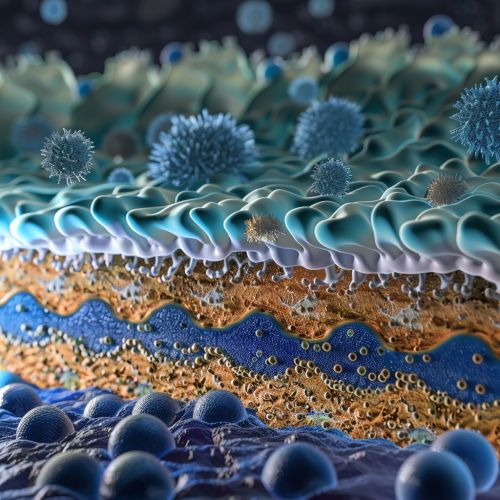Cell Bilayer
Structure of the Cell Bilayer
The cell membrane, also known as the plasma membrane, is a biological membrane that separates the interior of all cells from the outside environment. The cell membrane is selectively permeable to ions and organic molecules and controls the movement of substances in and out of cells. The basic function of the cell membrane is to protect the cell from its surroundings. The cell membrane consists of the lipid bilayer with embedded proteins. The cell membrane is also involved in anchoring the cytoskeleton to provide shape to the cell, and in attaching to the extracellular matrix and other cells to help group cells together to form tissues.


Lipid Bilayer
The lipid bilayer is a universal component of all cell membranes. Its role is critical because its structural components provide the barrier that marks the boundaries of a cell. The structure is called a "lipid bilayer" because it is composed of two layers of fat cells organized in two sheets. The lipid bilayer is the barrier that keeps ions, proteins and other molecules where they are needed and prevents them from diffusing into areas where they should not be. Lipid bilayers are ideally suited to this role because they are selectively permeable.
Proteins in the Cell Bilayer
Proteins within the cell bilayer serve various functions including transport of molecules and ions across the bilayer, signal transduction, and cell adhesion. There are two types of proteins that interact with the lipid bilayer: integral proteins and peripheral proteins. Integral proteins are permanently attached and are typically transmembrane proteins, meaning they span the entire lipid bilayer. Peripheral proteins are temporarily attached to the lipid bilayer or to integral proteins.
Fluid Mosaic Model
The fluid mosaic model explains the structure of the plasma membrane as a mosaic of lipid, protein and carbohydrate molecules in constant motion. This model describes the structure of the plasma membrane as a mosaic of components—including phospholipids, cholesterol, proteins, and carbohydrates—that gives the membrane a fluid character. Plasma membranes range from 5 to 10 nm in thickness. For comparison, human red blood cells, visible via light microscopy, are approximately 8 μm wide, or approximately 1,000 times wider than a plasma membrane.
Function of the Cell Bilayer
The cell bilayer has many functions, but the most basic one is to protect the cell. It provides the cell with physical isolation, regulation of exchange with the environment, sensitivity to the environment, and structural support. The cell membrane mediates cellular processes by regulating the materials that enter and exit the cell. The cell membrane is selectively permeable and able to regulate what enters and exits the cell, thus facilitating the transport of materials needed for survival.
